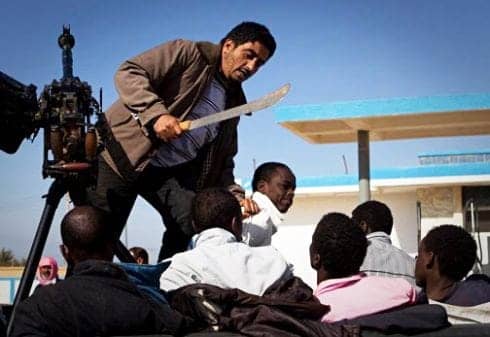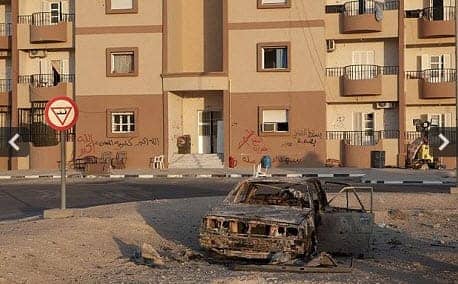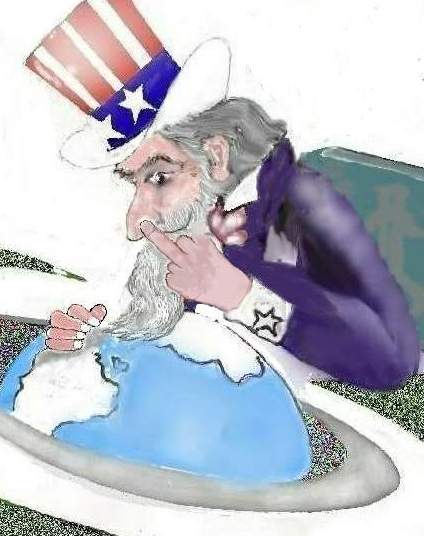The following is from CounterCurrents.
In Tel Aviv, An Arab Spring That Ignores The Arabs
By Greg Burris
17 September 2011
The Electronic Intifada
The Electronic Intifada
No one could have ever predicted that a single act of protest — the self-immolation of a desperate Tunisian street vendor — would unleash a tidal wave of collective resistance and rebellionthroughout North Africa and the Middle East, threatening to topple regimes that had long been considered permanent political players.
But perhaps the most surprising outcome of this regional groundswell of protest was to be seen in Israel where Jewish protesters held up placards and shouted slogans declaring that the revolutionary spirit of Cairo’s Tahrir Square had come to the streets of Tel Aviv. The Arab Spring, it seems, has turned into the Israeli Summer.
But how do the ongoing protests in Tel Aviv relate to the larger regional turmoil? What do the protests say about the current state of Zionism, and what do they mean for the occupation of Palestine? To answer these questions, one might begin by turning to a rather unexpected source: Israeli pop culture.
Zionism escapes unscathed
In 1984, Israeli rock musician Shalom Hanoch released his bestselling album Waiting for Messiah. Located squarely within the rock tradition of protest, the album was graced by an audacious piece of cover art: an extreme close-up of a filthy ashtray, overflowing with garbage and cigarette butts. It is as appropriate a metaphor as any for the true poverty that resides at the heart of the good life, for the grime undergirding the glamorous.
Further solidifying the album’s protest credentials is its title track which tells the tale of the fabled Jewish Messiah, who at long last arrives on earth. But his appearance in the world does not come as a happy occasion. Upon seeing the sad state of affairs that greets him in modern-day Israel, the intrepid, young Messiah does not fulfill any prophetic dreams. Instead, he throws himself from a rooftop, committing suicide on the pavement of a Tel Aviv street. “The Messiah is not coming,” Hanoch intones, his raspy voice accentuating the guttural sounds of Hebrew. “The Messiah is not even going to phone.”
But is the message of Waiting for Messiah really all that radical? Before embracing the song as a musical manifesto of leftist rebellion and revolt, one should delve a bit deeper. The lyrics suggest that the grievances leading to the Messiah’s suicidal plunge are entirely economic. Specifically cited is the mishandling of the Israeli stock market. One may thus surmise that the Messiah too was an unlucky investor.
Absent entirely from this picture are the Palestinians. They are relegated to the shadows — marginalized, obscured and forgotten. Thus, an image of protest is cultivated even if the thing that clearly demands the most protest — the ethnocentric Zionist state and its accompanying occupation of the Palestinian people — is not mentioned at all. It is as though everything can be criticized except for precisely that which matters most. In this fashion, protest — even that of an angry rock anthem — functions to perpetuate the very status quo it purports to be against. At the end of the day, Zionism escapes unscathed.
Revolt against neoliberalism
The recent protests that have erupted in Israel should be understood in the exact same fashion. Stationed in a makeshift tent city on Tel Aviv’s swanky Rothschild Boulevard, the protesters’ demands are strikingly similar to those voiced by their Arab neighbors: affordable housing, cheaper food and gasoline, higher wages and an end to the deterioration of the country’s health and education systems.
According to prominent Middle East labor historian Joel Beinin, “The Arab awakening is in part a rebellion against the neoliberal development model, even if it is rarely named. The housing crisis in Israel is similarly a symptom of neoliberal policies” (“The Israeli-Palestinian Conflict and the Arab Awakening,” Middle East Report Online, 1 August 2011). But while these economic problems have been exacerbated by Israel’s costly military occupation of Palestine and the government subsidization of illegal settler communities in the West Bank, the overwhelming tendency is to ignore these inconvenient facts and instead to treat the occupation as an entirely unrelated subject, as a “security issue” with no bearing on the protests whatsoever.
Thus, even though Hanoch’s album was released in 1984, it could have been recorded yesterday. Had its titular Messiah postponed his arrival on earth by 27 years and appeared in the hot Israeli summer of 2011, he would have still taken that rooftop dive and splattered his body on the streets below. Once again, the problem is the economy, and once again, the Palestinians are left completely out of view.
There are those who claim that addressing the Israeli occupation at this time would serve only to divide the protesters. Uri Avnery, for instance, has argued that even “bringing up the occupation would provide [Prime Minister Benjamin] Netanyahu with an easy weapon, split the tent-dwellers and derail the protests.” Avnery, who is a longtime fixture on the Israeli left, concludes that there is “no need to push the protesters” in this direction and that with patience, the protests will eventually turn against the occupation on their own, as if by magic (“How godly are thy tents? Who are these people? Where will they go from here?,” Counterpunch, 5 August 2011).
This view is not uncommon. However, the desire to delink the call for social justice from the occupation and to simply hope for the best is ill-conceived. The view that the unity of the protests must be maintained at all costs overlooks the crucial fact that a protest in Israel that does not also address the occupation is really no protest at all.
On Tel Aviv’s Rothschild Boulevard, the middle class demonstrators are thus attempting to wage an Arab Spring without any Arabs. While the tent city protest has been unusual in its size and in the wide degree of support it has received throughout the country, the urge behind it does not constitute a real challenge to the Israeli state. The protests represent a reaction against the economic injustices exacerbated by the Israeli government’s neoliberal policies, and as such, the broader framework of Zionism is entirely capable of absorbing the protesters’ demands.
Settlers embraced
Indeed, what is the Rothschild Boulevard rebellion but the latest manifestation of an old, Zionist dream? Like the pioneering Zionist settlers before them, the protesters today envision the creation of a welfare state in the land of milk and honey, where life is affordable, food is plentiful and the country’s rightful inhabitants, the Palestinians, are excluded from the discussion. They simply seem not to exist. The protesters do not want to disavow the Zionist dream; to the contrary, they want to implement it.
But a dream for the early Zionists was a living nightmare for the local Palestinians. When freedom for one people is achieved with the occupation of another, there is nothing to be celebrated. The Rothschild Boulevard rebellion departs in no way from this precedent. Without addressing the occupation, the protesters’ demands, at the very best, aim only to make life better for the occupiers, and the welcomed inclusion of members from the Ariel mega-settlement in the revolt, as reported by Max Blumenthal and Joseph Dana, should serve here as a grim warning (“How could the largest social movement in Israel’s history manage to ignore the country’s biggest moral disaster?”, Alternet, 24 August 2011) . It is the occupiers who stand to receive better health care, better education, higher wages, more affordable housing and all around better living conditions, and those living under the occupation receive nothing.
Conservative agenda
Thus, in this case, protest is not at all that radical. Like Hanoch’s earlier rock anthem, the image of radical protest conceals a rather conservative agenda. That is, protest functions within the predetermined parameters of the dominant social order. Rather than posing a threat to the Israeli state, the protests aim only to make life better for its Jewish citizens. They seek to improve the Zionist dream of building a social welfare state in a Palestine without Palestinians. What is really needed is for that dream and its accompanying system of apartheid to be dismantled entirely.
Thus, the various left-leaning supporters of the Rothschild Boulevard rebellion who defend the exclusion of the Palestinian issue in the name of Israeli unity have it all wrong. Unity does not mean coming together with occupation supporters and land-usurping settlers. Rather, real unity would mean crossing that much tabooed Jewish-Arab, Israeli-Palestinian divide. It would mean that the exclusive, ethnocentric dream of Zionism would have to be replaced by a democratic dream without segregation and apartheid. Economic justice predicated on ethnocentric exclusion is hardly a dream worth fighting for. When those Jewish Israeli citizens consigned to the bottom rungs of their government’s ladder of exploitation are ready to recognize that their true enemy is the same as the one terrorizing the occupied Palestinian people, then and only then will there be a unity in protest worth celebrating.
Greg Burris is a former instructor at Istanbul Bilgi University in Turkey and a current graduate student in the Department of Film and Media Studies at the University of California, Santa Barbara.









